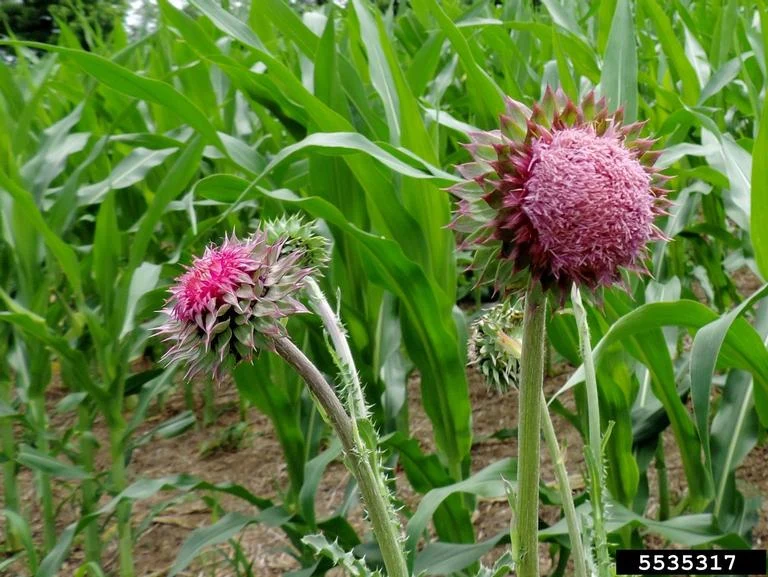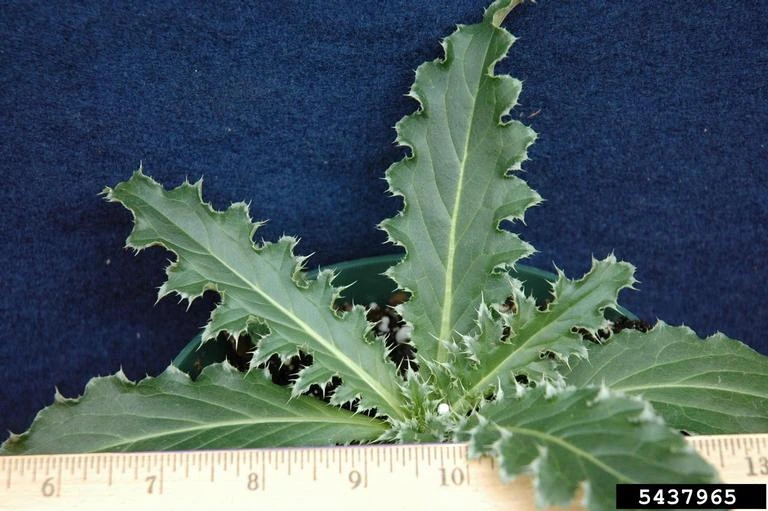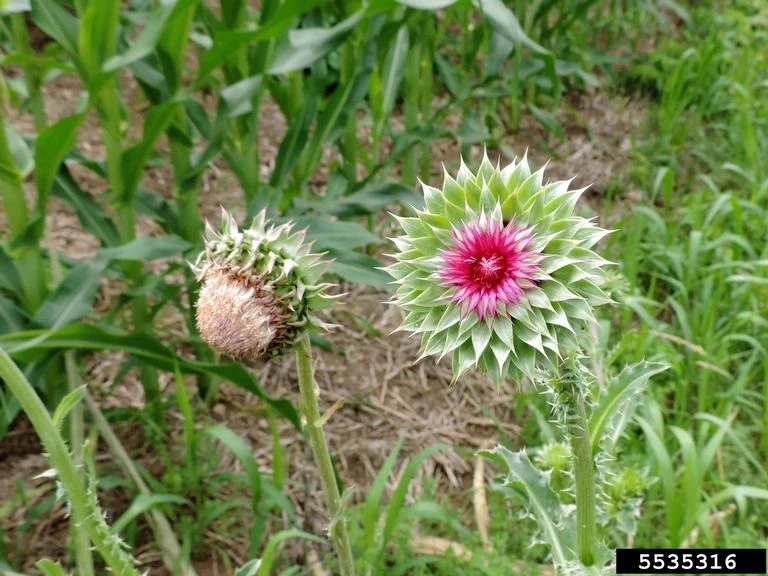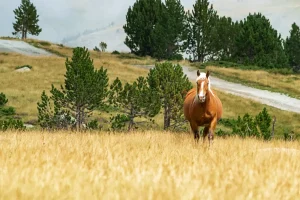
The musk thistle, also known as nodding thistle, is a Class B noxious weed in the state of Colorado. This aggressive biennial plant disrupts native ecosystems and poses a significant threat to Jefferson County’s agricultural productivity. Understanding its biology and implementing effective control strategies are crucial for protecting your property’s natural resources.
Systematic Classification

| Kingdom | Plantae |
| Division | Magnoliophyta |
| Class | Magnoliopsida |
| Order | Asterales |
| Family | Asteraceae |
| Genus | Carduus |
| Species | Carduus nutans |
Common Names: nodding thistle, plume thistle, bristle thistle, nodding plumeless thistle, musk thistle
This information is derived from the High Plains Integrated Pest Management Wiki.
Life Cycle and Identification
Musk thistle exhibits a two-year life cycle. During the first year, the plant forms a low-growing rosette of deeply lobed leaves. These leaves are hairless, dark green with a light green midrib, and possess characteristic whitish edges and spiny tips. The rosettes remain close to the ground.
The second year is where a big transformation takes place. The plant “bolts,” sending up a multi-branched, spiny-winged stem that can reach up to 6 feet in height. This conspicuous stalk proudly displays the musk thistle’s most recognizable feature: large, purple, powder-puff-shaped flower heads. While they are attractive, this species pose a big threat to properties.
Seed Production and Dispersal
Each musk thistle flower head is a prolific seed factory capable of producing 1,200 seeds. Even more concerning is that a single mature plant can generate up to 120,000 seeds in its lifetime. These seeds boast an impressive lifespan, remaining viable in the soil for over a decade. This remarkable ability to reproduce and disperse seeds allows musk thistles to rapidly colonize disturbed areas, outcompete native vegetation, and transform diverse ecosystems into monocultures of spiny purple plants.
Impact on Jefferson County
The plant’s spiny leaves and stems make it unpalatable to grazing animals, rendering pastures useless for livestock and wildlife. This loss of valuable grazing land can lead to economic challenges for Jefferson County’s agricultural sector. Musk thistle infestations can hinder recreational activities and even decrease property values.

Musk Thistle Control Methods
There are effective methods for controlling musk thistle populations in Jefferson County. Mechanical controls involve cutting and bagging seed heads before they mature (rosette stage) and disperse their seeds. Alternatively, severing the plant’s taproot a few inches below the soil surface can also be a successful control measure. Repeated efforts are often necessary due to the plant’s persistent seed bank.
Herbicide application, particularly during the rosette stage, offers another control strategy. However, it is crucial to consult with Jefferson County’s weed control department to ensure the selection of appropriate herbicides and application methods that comply with local regulations and minimize environmental impact.
Conclusion
The presence of musk thistle in your land in Jefferson County demands a proactive approach to manage its spread and protect the county’s valuable ecosystems and agricultural lands. By recognizing the plant’s identifying characteristics, understanding its life cycle and detrimental effects, and implementing effective control measures, you can effectively help combat this invasive threat.




